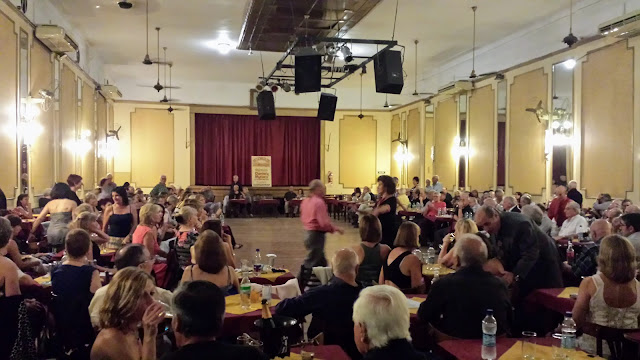 |
| Traditional milonga, Buenos Aires |
I can't remember the venue or name of this milonga. Google Maps says it was near Av. Jujuy but I don't find it reliably accurate with photo locations.
In the traditional milongas with Argentinians there is a respect, certainly, more formality. You don't steal someone else's seat. You don't stand in front of people or on the floor during the cortina. You make way to let people past, especially women. Men accompany women to and from the floor. Invitation is by look, from a respectful distance. You respect the music when you dance. You respect people in the ronda. You respect the customs of the milonga so you look away so that your friend can be invited easily. You don't distract her with chat during the cortina and so on.
This is related to but not quite the same as the courtesy referred to previously. It is a more codified form and it is also an identity. Some might say this is one aspect of being porteño/a, in a traditional interpretation. Or that this is what it is to be a milonguero/a.
Compared to many other cultures in Latin America, porteños now feel to me more European, like their architecture, or to a Europe of the past, than they did previously and now that I have met other americanos.
That said, an Argentinian I chat with from the suburbs of Buenos Aires doesn't feel like that. He feels very Argentinian, with courtesy, but not respeto milonguero and neither quite the same cortesia of other americanos I have met. Yet he feels a particular affinity with the traditions and culture of his homeland. He travels within it a lot and has great respect for indigenous peoples and their cultures and for lenguaje inclusivo.

No comments:
Post a Comment